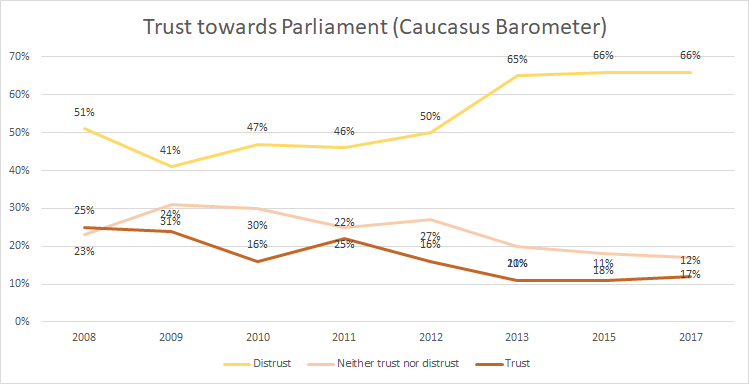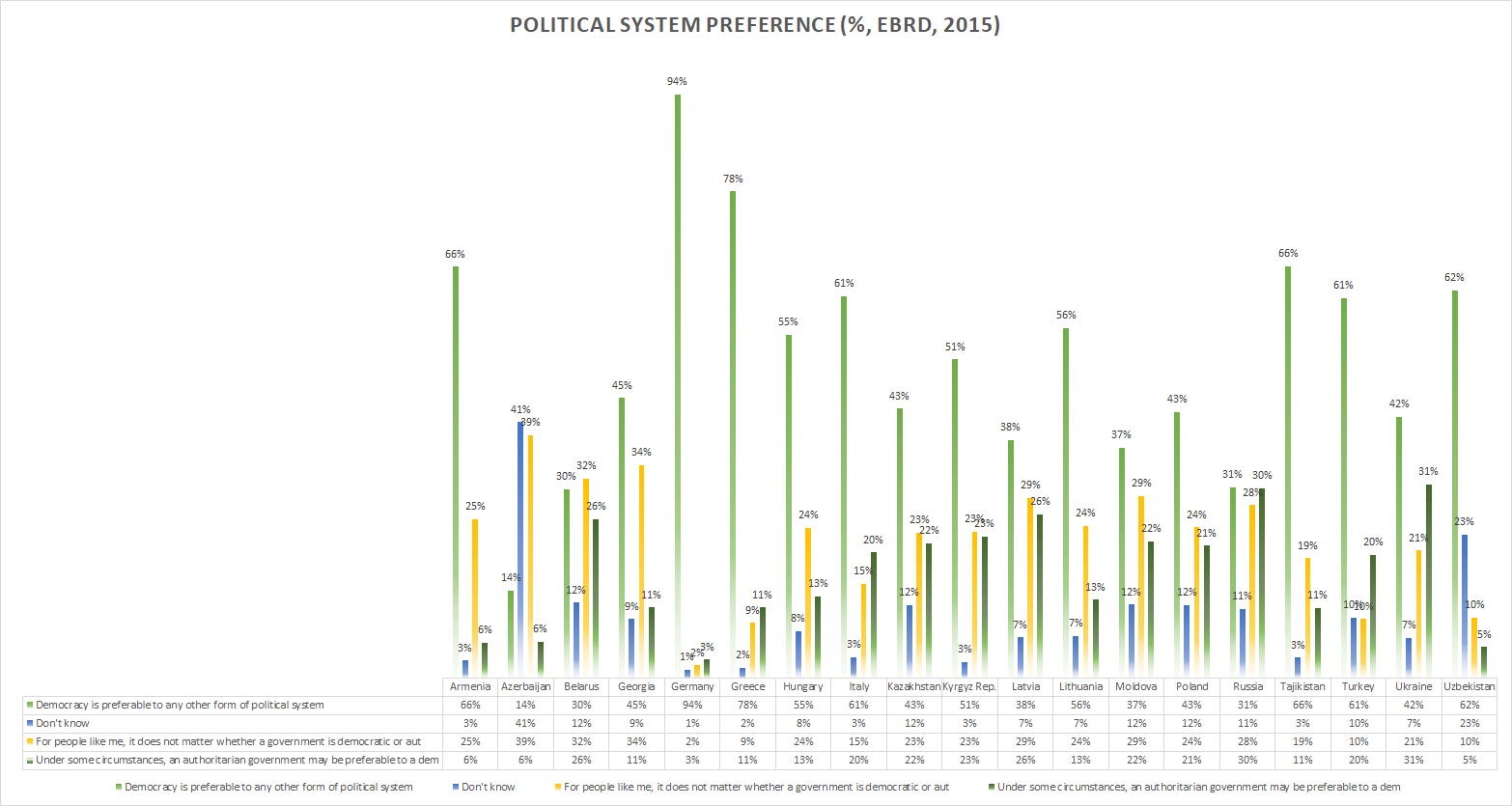Armenia experienced its most profound political change since becoming independent when former President and briefly Prime Minister Serzh Sargsyan resigned. Sargsyan served two terms as president of Armenia, but in 2015, he changed the constitution which moved Armenia from a semi-presidential system to a parliamentary one. Then, despite promising otherwise, he was elected Prime Minister by his party immediately after his last presidential term ended this month.
This sparked a protest organized by opponents to Sargsyan, opposition coalition Yelk (Way Out), but mostly the Civil Contract Party. These efforts were lead by charismatic multilingual 42-year-old opposition MP Nikol Pashinyan. Pashniyan is no newcomer, he has been battling Sargsyan for a decade.
I’m writing about the protests in other venues, but one of my main points is that Armenians were READY for this. Here are some analyses from the Caucasus Barometer to support this. (The CB has some nice online data analysis tools, but I made my own graphics to show some points better visually).
Armenians don’t trust Sargsyan [link to CB].
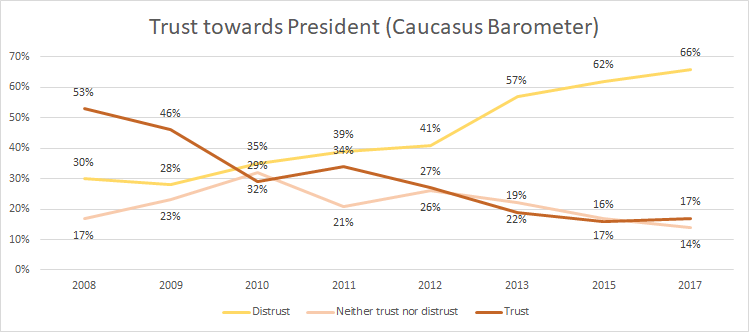
This line graph shows that the trust/distrust threshold was crossed in 2010 and for the past few years, very few Armenians trusted Sargsyan and many distrusted him.
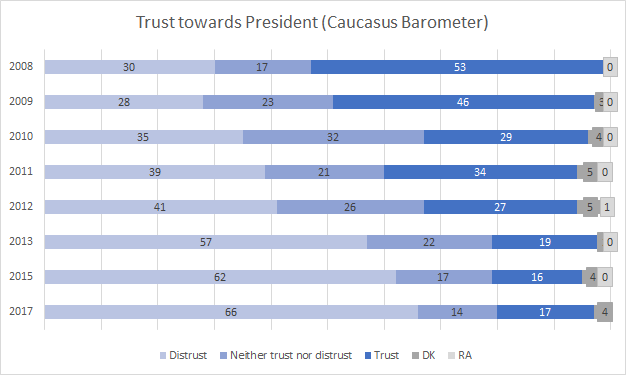
This is a bar graph version of above. You can see that trust basically swapped.
Similarly, people were unhappy with the direction that politics were going on [link to CB].
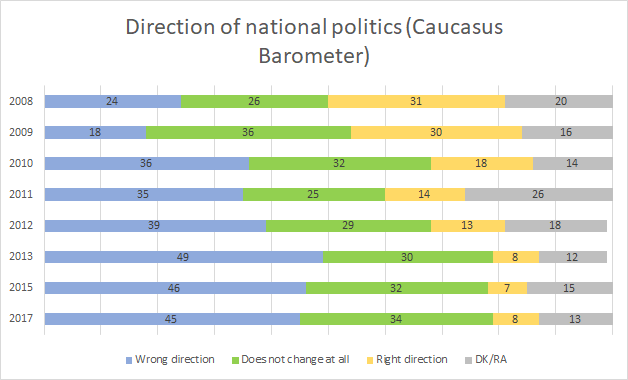
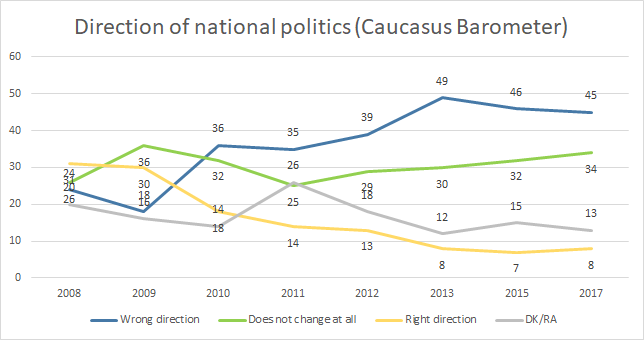
Although don’t knows and refuse to answers were high, in the past few years, very few Armenians felt that the country was going in the right direction.
Armenians have been fairly consistent in their opinion about Armenia being a democracy [link to CB].
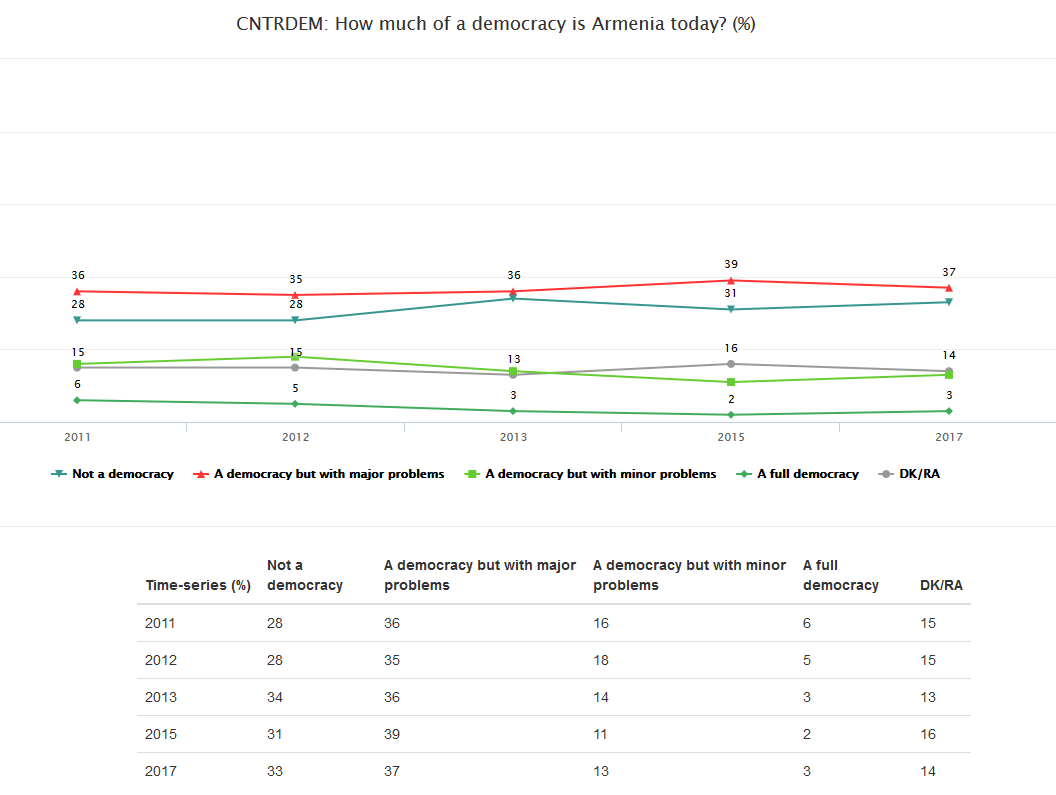
Election fraud and manipulation was widely connected with Sargsyan and the CB shows it [link to CB].
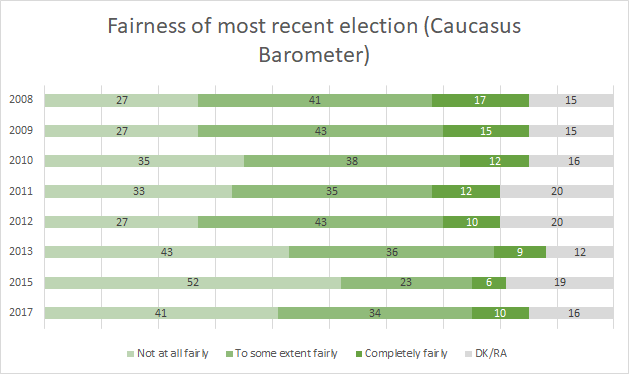
Additionally, Armenians are pretty keen on criticizing their government and protesting against it. [Link to CB on being critical] [Link to CB on protest]
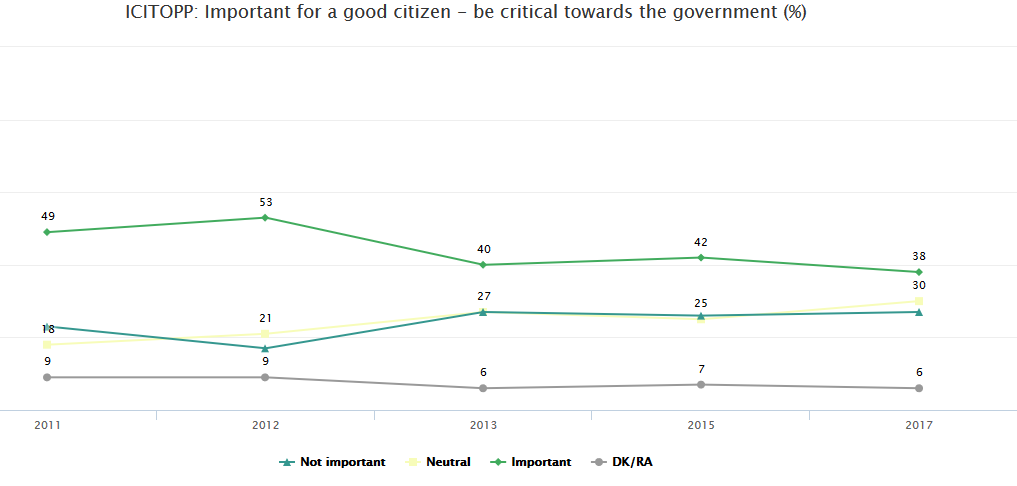

Also, compared to Azerbaijan and Georgia, Armenians are especially keen on these things. (These are from the 2013 CB, the last that compared all 3 countries – critical, protest).
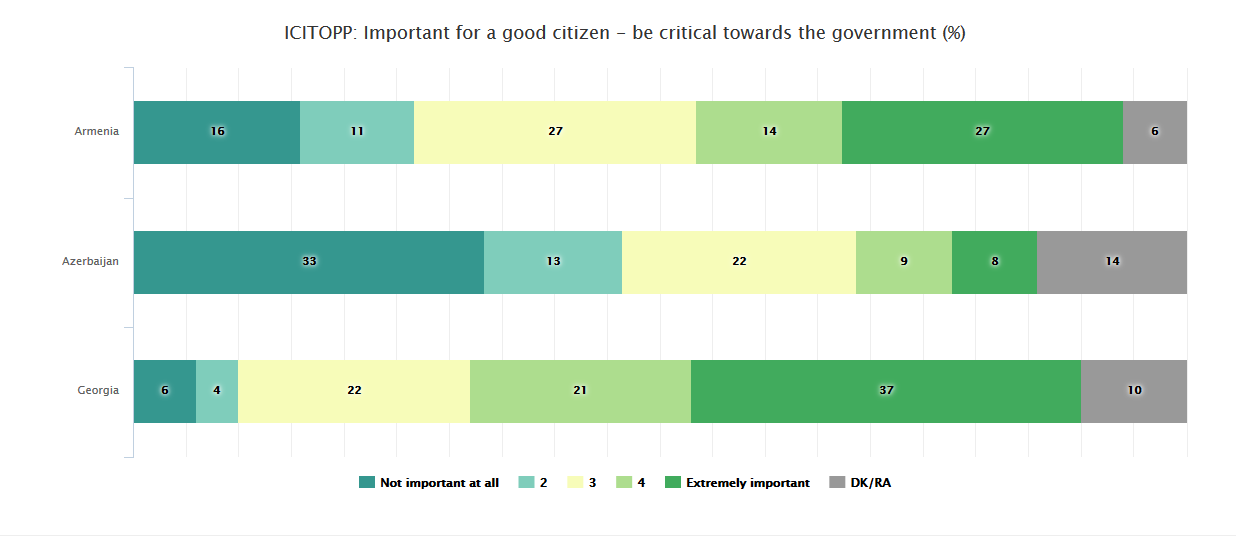
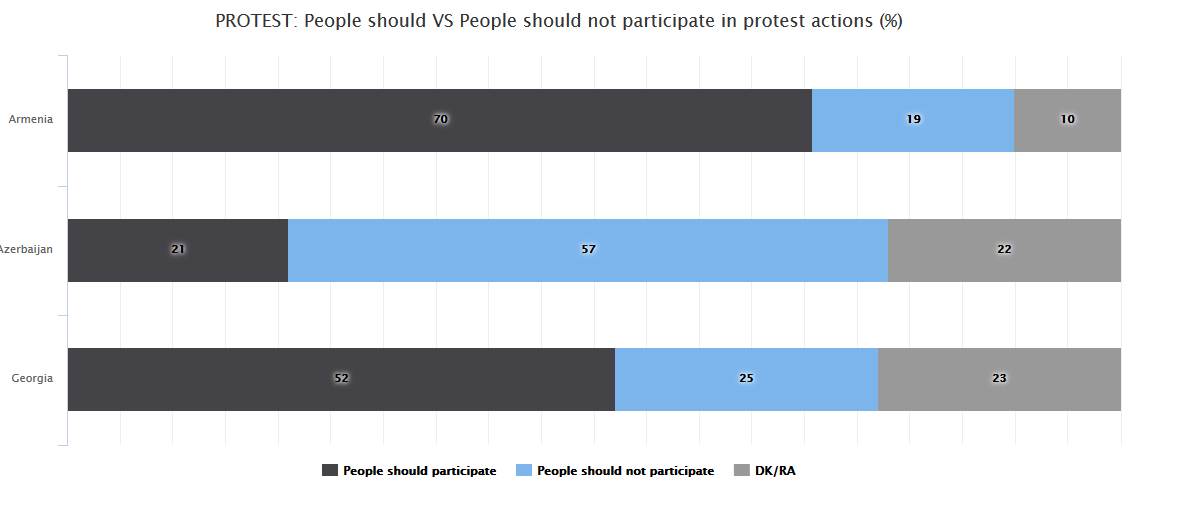
….
Added May 1 – trust toward Parliament [link to CB]
